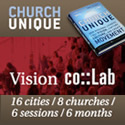Three Myths About Church Dropouts
- Posted by: Todd
- Posted on: Tue, December 18, 2007
- Viewed 76
- (2) comments so far
1. The influence of the secular university has pushed them away.
Wrong - State universities and colleges are not to blame. No significant difference exists between the dropout rates of those who attend at least a year of college and those who do not. For those that attend college, 69% of active churchgoing youth stop attending church for at least a year between the ages of 18 and 22. Yet 71% of active youth who do not go to college stop attending church during the same period. It’s a statistical tie – the college itself is not prompting students to drop out of church.
2. High school students are planning to leave the church once they go to college.
Wrong - Students are not planning to leave the church. Our research reveals that an overwhelming majority (80%) of high school students do not plan to leave their church once they graduate. Conversely, only 20% of high school students have preconceived notions to leave the fellowship once out of their parents’ nest. Students are not fleeing the church because of deep desires for personal freedom. Nor are they scheming to leave once out of the house.
3. The scandal-happy media has disenchanted our youth.
Wrong - students are not leaving the church because of the attention given to recent scandals surrounding several well-known pastors and churches. While a media melee usually accompanies these large scale evangelical failures of church leadership, students do not leave the church because of them. In fact, only 15% of those who feel displeasure with the church say it’s because of a moral or ethical failure of the leadership.
More here...
What do you think? What are your impressions of these three myths?
Thom and Sam Rainer are putting the finishing touches on their new book, "Essential Church". Today at the Church Forward blog, Sam Rainer says that they've found that 70% of those that leave the church do so between the ages of 18 and 22. He then introduces three myths about these dropouts...
Comments
if you want a Globally Recognized Avatar (the images next to your profile) get them here. Once you sign up, they will displayed on any website that supports them.






Billy on Fri, December 21, 2007
How does one measure church dropout rates? Serious question… How does one measure what a group of people are ‘not’ doing.
‘Such-and-such’ is on the church rolls, but hasn’t darkened the door since he left for college. Is that a dropout? How do we know that he is not attending church somewhere else…or do we only care whether he goes to OUR church?
The youth to adult transition is very rough in most churches. Just compare what the youth group is doing with what the adults are doing.
I understand the rationale for operating the youth group as though it is a separate congregation with a rocking worship band and youth-oriented preaching, but we seem to do a really terrible job of helping 18-22 year-olds acclimate to the ‘boring’ service that the adults know and tolerate.
GUNNY HARTMAN on Thu, December 27, 2007
I’m feeling ya, Billy.
A big question to ask is whether or not we treat youth like big kids or young adults. There’s a world of difference between the two and the expectations therein, but we go the route of the latter at our church.
Page 1 of 1 pages
Post a Comment